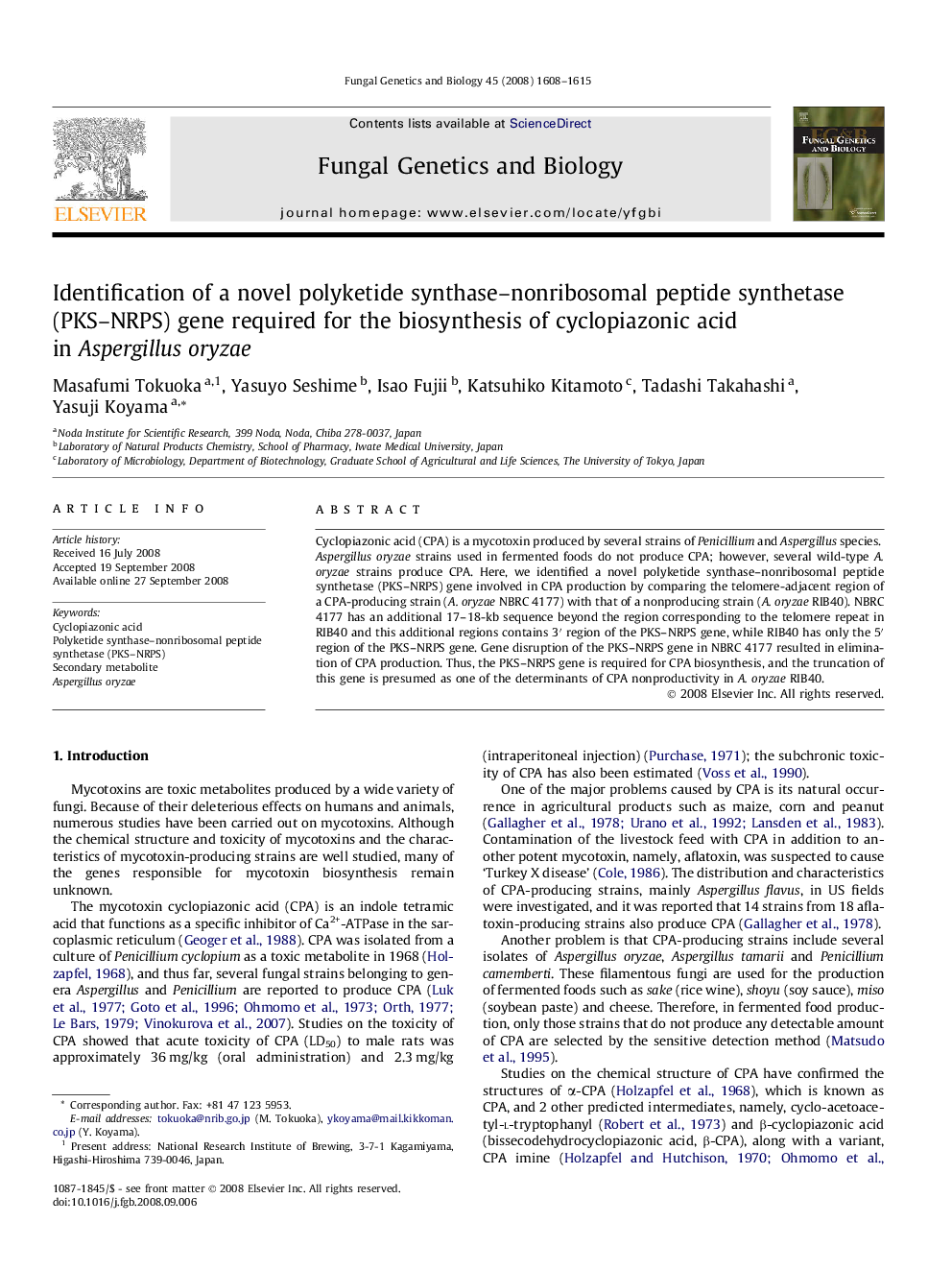| Article ID | Journal | Published Year | Pages | File Type |
|---|---|---|---|---|
| 2181474 | Fungal Genetics and Biology | 2008 | 8 Pages |
Cyclopiazonic acid (CPA) is a mycotoxin produced by several strains of Penicillium and Aspergillus species. Aspergillus oryzae strains used in fermented foods do not produce CPA; however, several wild-type A. oryzae strains produce CPA. Here, we identified a novel polyketide synthase–nonribosomal peptide synthetase (PKS–NRPS) gene involved in CPA production by comparing the telomere-adjacent region of a CPA-producing strain (A. oryzae NBRC 4177) with that of a nonproducing strain (A. oryzae RIB40). NBRC 4177 has an additional 17–18-kb sequence beyond the region corresponding to the telomere repeat in RIB40 and this additional regions contains 3′ region of the PKS–NRPS gene, while RIB40 has only the 5′ region of the PKS–NRPS gene. Gene disruption of the PKS–NRPS gene in NBRC 4177 resulted in elimination of CPA production. Thus, the PKS–NRPS gene is required for CPA biosynthesis, and the truncation of this gene is presumed as one of the determinants of CPA nonproductivity in A. oryzae RIB40.
